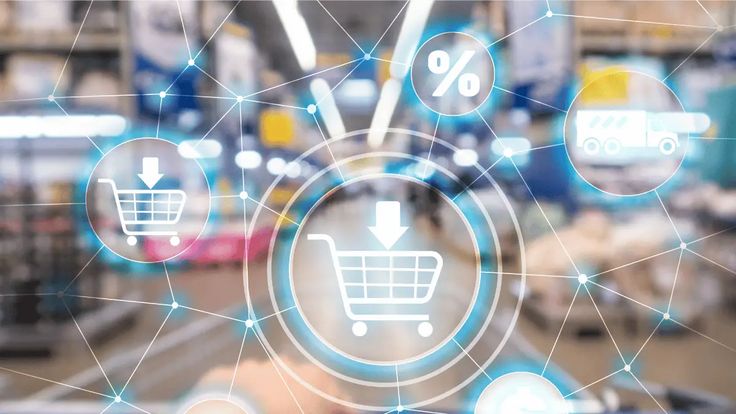The rapid evolution of digital commerce has dramatically reshaped how consumers interact with brands and make purchasing decisions. This comprehensive article examines the key trends driving the e-commerce revolution, the underlying technological advancements, and the resulting transformations in consumer behavior. With in-depth analysis, historical context, and future predictions, we delve into how modern online shopping is redefining convenience, personalization, and the overall shopping experience.
Over the past two decades, the landscape of retail has shifted from traditional brick-and-mortar stores to a dynamic, online-first approach. Driven by technological breakthroughs, increased internet accessibility, and evolving consumer expectations, e-commerce has become the dominant force in the retail sector. This transformation is not just limited to where people shop, but also how they interact with brands, compare products, and make purchasing decisions.
As businesses strive to maximize revenue through avenues such as Google AdSense and optimized SEO strategies, understanding these trends is critical. By examining the forces behind digital shopping, companies can better tailor their marketing strategies, enhance user experiences, and ultimately, build lasting customer relationships.
Historical Overview of E-commerce
E-commerce has evolved significantly since its inception. Initially, online shopping was a novelty—an alternative channel where tech-savvy consumers could experiment with purchasing goods without ever leaving their homes. Over time, however, the sector expanded rapidly as internet infrastructure improved and online payment systems became secure and user-friendly.
Key Milestones in E-commerce Evolution
A. The Dot-com Boom:
In the late 1990s and early 2000s, numerous online startups emerged, capturing the public’s imagination with the promise of limitless growth in digital commerce.
B. Rise of Marketplaces:
Platforms like eBay and Amazon redefined consumer expectations by offering vast product selections, customer reviews, and secure transaction processes.
C. Introduction of Mobile Shopping:
With the advent of smartphones, e-commerce shifted from desktop-based browsing to mobile applications, which greatly increased accessibility and convenience.
D. Integration of Social Media:
Social platforms began to influence purchasing decisions, with user-generated content, reviews, and influencer endorsements playing a crucial role in building consumer trust.
E. Personalization and AI:
The integration of artificial intelligence into e-commerce has allowed for personalized product recommendations, dynamic pricing strategies, and improved customer service through chatbots.
This evolutionary timeline illustrates not only the growth of e-commerce but also how the digital marketplace has continuously adapted to meet changing consumer behaviors.
Shifts in Consumer Behavior
Consumer behavior in the digital age is markedly different from traditional shopping patterns. Today’s customers are more informed, connected, and value-driven. They demand seamless experiences, quick access to information, and highly personalized interactions.
Digital Empowerment and Informed Decisions
The internet has empowered consumers by providing easy access to detailed product information, reviews, and price comparisons. This transparency has led to more discerning customers who are less likely to make impulsive decisions and more inclined to research thoroughly before purchasing.
A. Information Accessibility:
- Consumers now have the ability to instantly access product specifications, customer testimonials, and expert reviews.
- This widespread availability of information forces companies to maintain high standards in quality and service.
B. Value-Driven Shopping:
- Shoppers are increasingly motivated by the search for value, balancing quality and cost.
- Brands that emphasize transparency and ethical practices are often favored.
C. Omnichannel Engagement:
- Consumers enjoy engaging with brands across multiple channels—online websites, mobile apps, social media, and physical stores.
- This multi-platform interaction reinforces brand loyalty and enhances the shopping experience.
The Role of Trust and Security
Online security and privacy are major concerns for consumers. With increasing reports of data breaches and cyber threats, companies must prioritize the protection of personal information and provide secure payment gateways. Establishing trust is paramount, and businesses that invest in robust security measures and transparent data policies are more likely to retain their customers.
Mobile Commerce Revolution
Mobile commerce, or m-commerce, has redefined the shopping landscape by making it possible for consumers to shop from anywhere at any time. The proliferation of smartphones and high-speed internet has led to a surge in mobile transactions, fundamentally altering how consumers interact with e-commerce platforms.
Advantages of Mobile Shopping
A. Enhanced Convenience:
- Smartphones provide consumers the flexibility to shop on the go, whether they are commuting or simply away from a computer.
- Mobile apps offer features like one-click purchasing and digital wallets, streamlining the checkout process.
B. Improved User Experience:
- Responsive design and mobile-optimized websites ensure that users have a smooth browsing experience.
- Innovative features such as voice search and augmented reality (AR) are further enhancing the mobile shopping experience.
C. Real-Time Engagement:
- Mobile notifications allow brands to communicate promotions, flash sales, and personalized recommendations directly to users.
- Location-based services and geo-targeted ads help retailers offer relevant deals based on the shopper’s proximity.
Challenges in Mobile Commerce
Despite its many advantages, mobile commerce also presents challenges. Screen size limitations, battery life issues, and the need for robust mobile security are critical factors that businesses must address. Additionally, ensuring that mobile interfaces are intuitive and accessible to a diverse audience remains a top priority.
The Impact of Social Media on Consumer Behavior
Social media platforms have transcended their initial roles as communication tools to become influential drivers of e-commerce. They not only offer avenues for product discovery but also provide platforms for consumer feedback and community building.
Social Media as a Marketing Powerhouse
A. Influencer Partnerships:
- Influencers, who have cultivated trust within their niche communities, can sway consumer opinions and drive significant traffic to e-commerce sites.
- Brands are increasingly investing in collaborations with influencers to tap into their loyal follower base.
B. User-Generated Content:
- Reviews, unboxing videos, and customer testimonials shared on social platforms create an organic layer of trust and authenticity.
- This content not only educates potential buyers but also fosters a sense of community around the brand.
C. Interactive Engagement:
- Social media offers opportunities for interactive engagement through live streams, Q&A sessions, and behind-the-scenes content.
- Such engagement enhances customer relationships and builds a loyal following.
Enhancing Social Commerce
Social commerce—the integration of e-commerce and social media—is on the rise. Platforms like Instagram, Facebook, and Pinterest have introduced features that allow users to purchase products directly from posts. This seamless shopping experience bridges the gap between product discovery and purchase, making it easier for consumers to act on their impulses while browsing.
Personalization and Data-Driven Strategies
Personalization is at the heart of modern e-commerce, driven by sophisticated data analytics and machine learning algorithms. Consumers today expect shopping experiences that are tailored to their individual preferences and behaviors. Data collected from previous interactions, browsing history, and social media engagement are used to create customized recommendations and targeted marketing campaigns.
Benefits of Personalized Shopping Experiences
A. Enhanced Customer Satisfaction:
- Personalization leads to a more relevant and engaging shopping experience, increasing overall customer satisfaction.
- Tailored product recommendations help consumers find exactly what they need, often before they even realize it.
B. Increased Conversion Rates:
- When consumers are presented with products that align with their interests, they are more likely to complete a purchase.
- Personalized emails, dynamic website content, and targeted ads contribute to higher conversion rates.
C. Stronger Customer Loyalty:
- Personalized experiences foster a sense of connection between the consumer and the brand.
- This connection encourages repeat purchases and long-term loyalty.
Implementing Data-Driven Personalization
To harness the full potential of personalization, businesses must invest in robust data analytics tools and secure data management practices. This involves collecting data ethically, analyzing consumer behavior patterns, and using insights to refine marketing strategies continually. The successful implementation of these practices not only drives sales but also builds trust and credibility with consumers.

Omnichannel Retailing
Modern consumers expect a seamless shopping experience, whether they are engaging with a brand online, on mobile, or in a physical store. Omnichannel retailing is the integration of these diverse channels to provide a unified customer experience. This strategy not only meets the evolving demands of consumers but also enhances brand visibility and loyalty.
Key Elements of Omnichannel Strategy
A. Unified Customer Data:
- Integrating customer data across all channels ensures that every interaction is informed by previous engagements.
- This unified approach allows for personalized experiences regardless of the channel.
B. Consistent Branding:
- Maintaining a consistent brand image across all platforms reinforces consumer trust and recognition.
- Uniform messaging and design help consumers feel connected to the brand, whether they are shopping online or offline.
C. Seamless Transition Between Channels:
- Technologies such as buy-online-pickup-in-store (BOPIS) and mobile payment systems facilitate a smooth transition between digital and physical shopping environments.
- This integration enhances the overall customer experience by combining convenience with immediate product access.
The Impact on Consumer Behavior
Omnichannel retailing has redefined how consumers interact with brands. With a seamless experience across all touchpoints, shoppers are more likely to engage with multiple channels, resulting in increased brand loyalty and higher customer lifetime value. As companies continue to invest in omnichannel strategies, the gap between online and offline shopping continues to narrow, setting new standards for customer service and engagement.
Emerging Technologies in E-commerce
The rapid pace of technological innovation continues to shape the future of e-commerce. Emerging technologies such as artificial intelligence (AI), augmented reality (AR), virtual reality (VR), and blockchain are creating new opportunities for businesses and altering consumer expectations.
Technological Innovations Shaping the Future
A. Artificial Intelligence and Machine Learning:
- AI-driven chatbots and virtual assistants are becoming integral to customer service, offering immediate support and personalized recommendations.
- Machine learning algorithms analyze vast amounts of data to predict consumer behavior, optimize pricing strategies, and streamline inventory management.
B. Augmented and Virtual Reality:
- AR and VR technologies allow consumers to visualize products in their own environment before making a purchase.
- Virtual try-ons and immersive shopping experiences are particularly transforming the fashion and home decor industries, reducing the gap between online and in-store experiences.
C. Blockchain and Enhanced Security:
- Blockchain technology promises to increase transparency in supply chains and secure transactions.
- With the growing concerns over data privacy, blockchain can offer decentralized security measures, ensuring that consumer data is handled with the utmost care.
D. Voice Commerce:
- The proliferation of smart speakers and voice assistants like Alexa and Google Assistant is paving the way for voice-activated shopping.
- This hands-free approach to commerce is particularly appealing for consumers seeking convenience and efficiency.
The Consumer Impact of New Technologies
These emerging technologies not only enhance the overall shopping experience but also set new expectations for convenience, security, and interactivity. As companies integrate these advancements into their platforms, consumers can expect increasingly sophisticated and engaging ways to shop online.
Globalization and Cross-Border E-commerce
E-commerce has also broken down geographical barriers, enabling consumers to access products from around the globe with ease. Cross-border e-commerce is on the rise as consumers seek unique products, competitive pricing, and a broader range of choices beyond what local markets offer.
Opportunities and Challenges of Global E-commerce
A. Access to International Markets:
- Consumers are no longer confined to local brands or products, opening up a world of opportunities for discovery.
- Retailers can tap into international markets by leveraging global shipping networks and localized websites.
B. Diverse Consumer Preferences:
- Global e-commerce necessitates an understanding of diverse cultural preferences and consumer behaviors.
- Brands that adapt their offerings to local tastes and regulations are more likely to succeed in international markets.
C. Logistical and Regulatory Challenges:
- Cross-border transactions often involve complex logistics, customs regulations, and varying tax laws.
- Businesses must navigate these challenges to provide a seamless shopping experience for international consumers.
Strategies for Successful Global Expansion
To thrive in the global marketplace, companies must develop robust logistical frameworks and adapt their marketing strategies to resonate with diverse audiences. This includes multilingual support, localized payment options, and culturally sensitive marketing campaigns that build trust with international customers.

Future Predictions for E-commerce and Consumer Behavior
As technology continues to evolve at a rapid pace, the future of e-commerce promises even more transformative changes in consumer behavior. Here are some key predictions for the next decade:
A. Increased Adoption of AI and Automation:
- Artificial intelligence will further personalize the shopping experience, from product recommendations to automated customer service.
- Automation in logistics and inventory management will streamline operations and reduce costs.
B. Expansion of Augmented and Virtual Reality:
- AR and VR technologies will become more accessible, providing consumers with immersive experiences that bridge the gap between digital and physical shopping.
- Retailers will increasingly use virtual environments to showcase products and offer interactive experiences.
C. Rise of Voice and Conversational Commerce:
- With advancements in voice recognition, voice-activated shopping will become a mainstream method for purchasing products.
- Conversational commerce through chatbots and virtual assistants will further simplify the buying process.
D. Greater Emphasis on Sustainability and Ethical Practices:
- Modern consumers are increasingly conscious of environmental and ethical issues.
- E-commerce platforms will need to prioritize sustainable practices and transparent supply chains to meet these demands.
E. Enhanced Omnichannel Integration:
- The distinction between online and offline shopping will continue to blur as omnichannel strategies mature.
- Retailers will offer even more integrated and consistent experiences across all touchpoints, from mobile apps to physical stores.
F. Increased Focus on Cybersecurity:
- With growing concerns over data privacy, investments in cybersecurity will be paramount.
- Enhanced security protocols and blockchain technologies will play a crucial role in protecting consumer data and fostering trust.
Conclusion
The transformative power of e-commerce trends on consumer behavior is undeniable. From the early days of online shopping to the current landscape defined by mobile commerce, social media influence, and advanced personalization techniques, the digital retail environment has continuously evolved to meet the demands of a modern, connected audience.
Businesses that stay ahead of these trends and invest in emerging technologies are better positioned to capture the evolving preferences of consumers. By embracing omnichannel retailing, leveraging data-driven insights, and ensuring robust security measures, brands can build strong, trust-based relationships with their customers.
As we look to the future, the integration of AI, AR, VR, and voice commerce will further redefine how we shop, interact, and engage with brands. The opportunities for innovation are endless, and the next chapter of e-commerce promises to be as transformative as the last. Companies that adapt and innovate in response to these trends will not only thrive in the competitive digital marketplace but also shape the future of consumer behavior in ways we have yet to imagine.
By understanding and embracing these dynamic trends, businesses and consumers alike can navigate the evolving digital landscape with confidence and excitement for the innovations that lie ahead.










